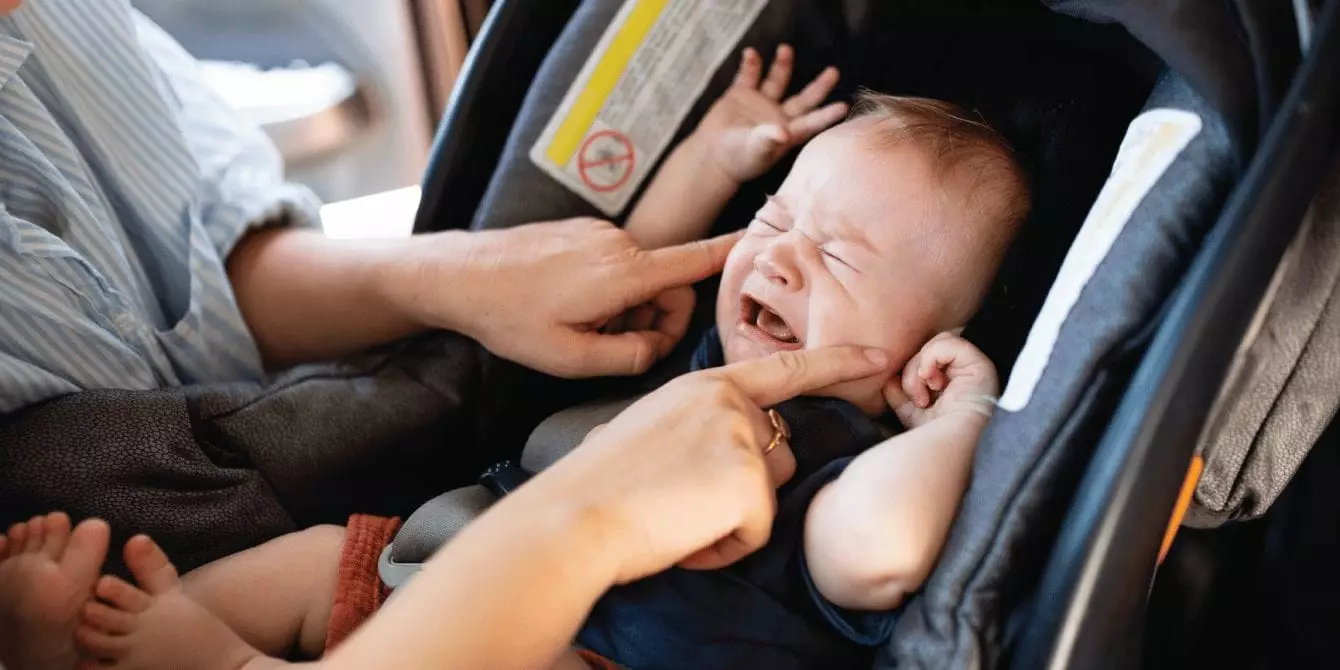Traveling with babies often feels like navigating a minefield of emotions and physical discomforts, especially when it involves a crying infant. For many parents, the sight—or sound—of that tiny human wailing inside a car seat becomes an instant stressor. This isn’t merely about noise; it’s deeply emotional and psychological. Babies cry because their innate survival instincts prompt them to seek reassurance and proximity to caregivers. When separated by a car seat, that instinctive call for comfort triggers a distress cry, often labeled as separation anxiety. Unlike adults who may tolerate discomfort or frustration better, infants lack the emotional regulation skills to self-soothe in these situations. To many parents, this is a relentless challenge that can turn a simple trip into a battle of wills, heightening feelings of frustration or helplessness.
The physiology behind crying draws a potent response from adults. Human nature is wired for empathy—sounds of distress activate a primal response, eliciting empathy and a desire to comfort. Unfortunately, during a car journey, this natural inclination intensifies parental stress, often resulting in emotional tension and physical strain, like increased heart rate and mounting anxiety. The cycle of distress becomes a self-perpetuating loop, where crying fuels stress, which can make soothing even more difficult. Beyond personal frustration, distracted driving due to an upset infant becomes a serious safety concern, increasing the risk of accidents. The challenge is not solely to suppress the noise but to address its root causes and, in the process, protect both emotional well-being and safety.
Addressing Comfort and Anxiety: Strategies to Ease the Journey
The key to transforming a crying car seat from a source of stress into a smoother experience lies in preemptive preparation. Making the environment as comfortable as possible can significantly reduce distress. A critical mistake many parents make is allowing babies to lean directly on the straps during loading, which can startle or irritate them. Ensuring that the baby is snug yet comfortable, with the straps positioned appropriately and without sudden contact, lays the foundation for calmer rides. Various accessories, such as StrapAway pins, are practical tools that help keep straps out of the way during loading and unloading, minimizing discomfort triggers.
Acclimating your child gradually is another powerful method. Just as children need time to adjust to new environments, they benefit from repeated positive experiences with car rides. Short trips, taken regularly during times when the baby is awake and calm, can build positive associations. This approach involves a lot of patience, but the payoff—an increasingly relaxed infant—is worth the effort. For example, parents might sit in the backseat playing or engaging with the baby while the car is parked, gradually introducing movement and longer rides. Adjusting the placement of the car seat itself, ensuring it doesn’t rest directly against the seat behind, can also add comfort by reducing jostling. Small changes, like seat positioning, can make a significant difference.
Temperature regulation is another vital component. Many assume that cold is the main concern, but warmth can be equally problematic, especially since overdressing can cause overheating and discomfort. Babies should be dressed in weather-appropriate, lightweight clothing, leaving bulky jackets or coats for outside the car. Proper dressing ensures the straps fit snugly, which is essential for safety and comfort, reducing the likelihood of discomfort-related crying. Additionally, timing the trip during your baby’s typical sleep periods can help; a tired, ready-to-nap infant might drift off peacefully, thus minimizing crying episodes. Using soothing stimuli such as music or familiar sounds can further enhance comfort. Studies show that gentle music can extend periods of calmness, and parents singing along to favorite lullabies can create a calming environment that benefits both baby and caregiver.
Innovative Tools and Natural Tactics for Calmer Rides
Many parents swear by technological enhancements that promote tranquility. Portable sound machines—like the so-called “orange miracle”—have become household staples for sleepy babies. These devices mimic human voices and shush sounds, soothing infants en masse. The beauty of such tools lies in their flexibility; they’re portable, adjustable, and capable of creating a serene environment inside the noisy vehicle. Parents also find value in familiar routines—playing a curated playlist of favorite songs or baby’s favorite lullabies—and pairing these with gentle, loving singing. The shared experience of music not only calms the baby but can also lift the parent’s mood during tense moments.
Diet and digestive comfort are often overlooked but crucial elements. Gas and reflux are common sources of discomfort that can intensify crying. Planning trips when your baby’s stomach is likely to be empty or less gassy—such as after burping or within certain timeframes after feeding—can significantly ease discomfort. For reflux-prone infants, natural remedies, or consulting a pediatrician, might help find comfort solutions that reduce pain during travel. The goal should be to maximize the chances of a peaceful, pain-free ride rather than merely trying to silence the crying with distractions alone.
Lastly, it is important for parents to temper expectations with patience and perspective. Crying in the car is a phase most children eventually outgrow. While the journey can seem endless during challenging periods, experiences shared by seasoned parents reveal that, with time and persistence, these noisy episodes give way to calmer, more predictable trips. Recognizing that this is a temporary challenge allows parents to stay resilient and optimistic about future travels, trusting that patience and preparation will ultimately lead to more peaceful journeys.

